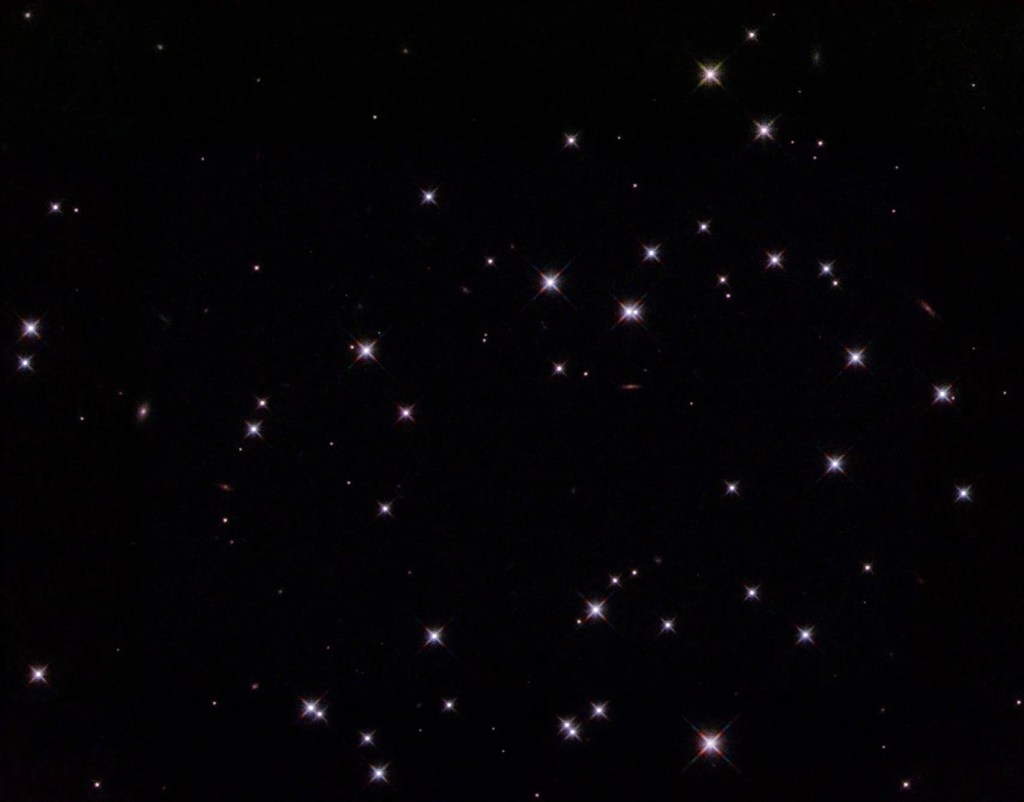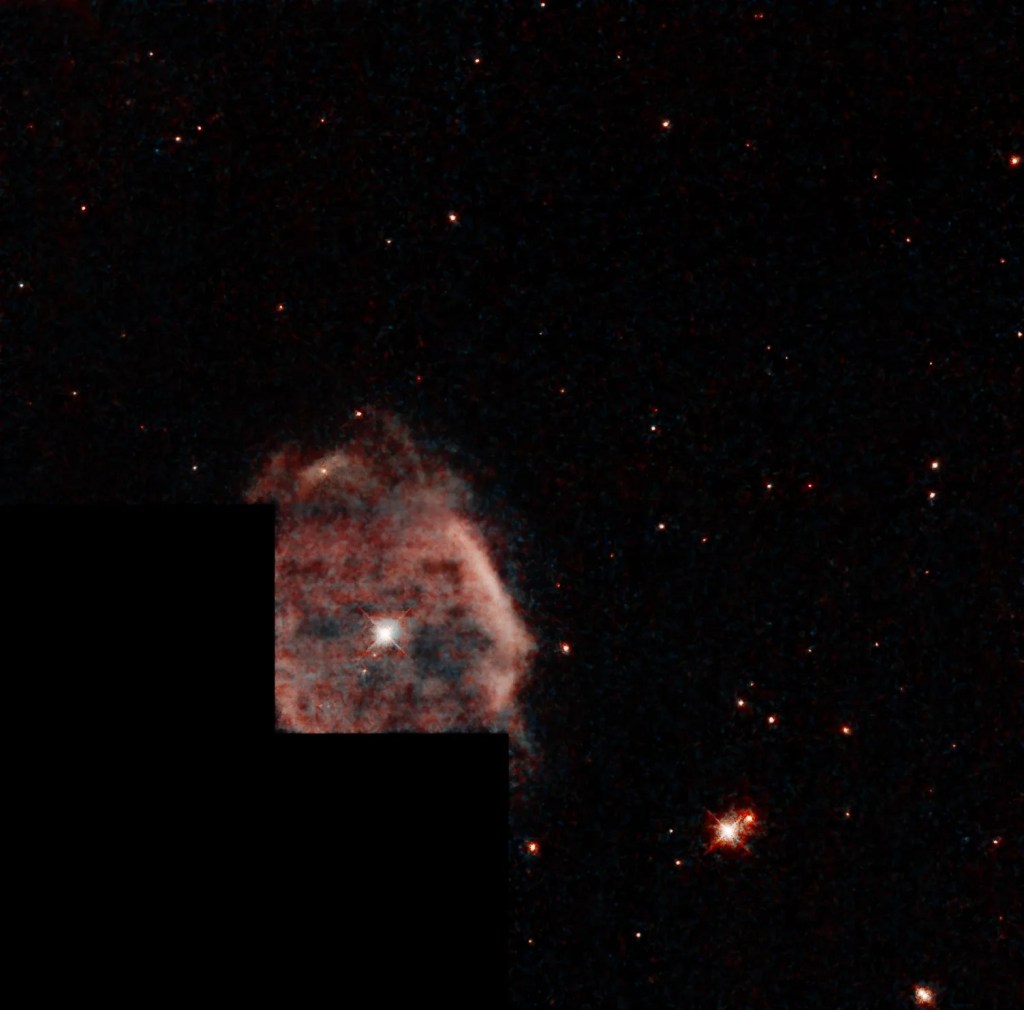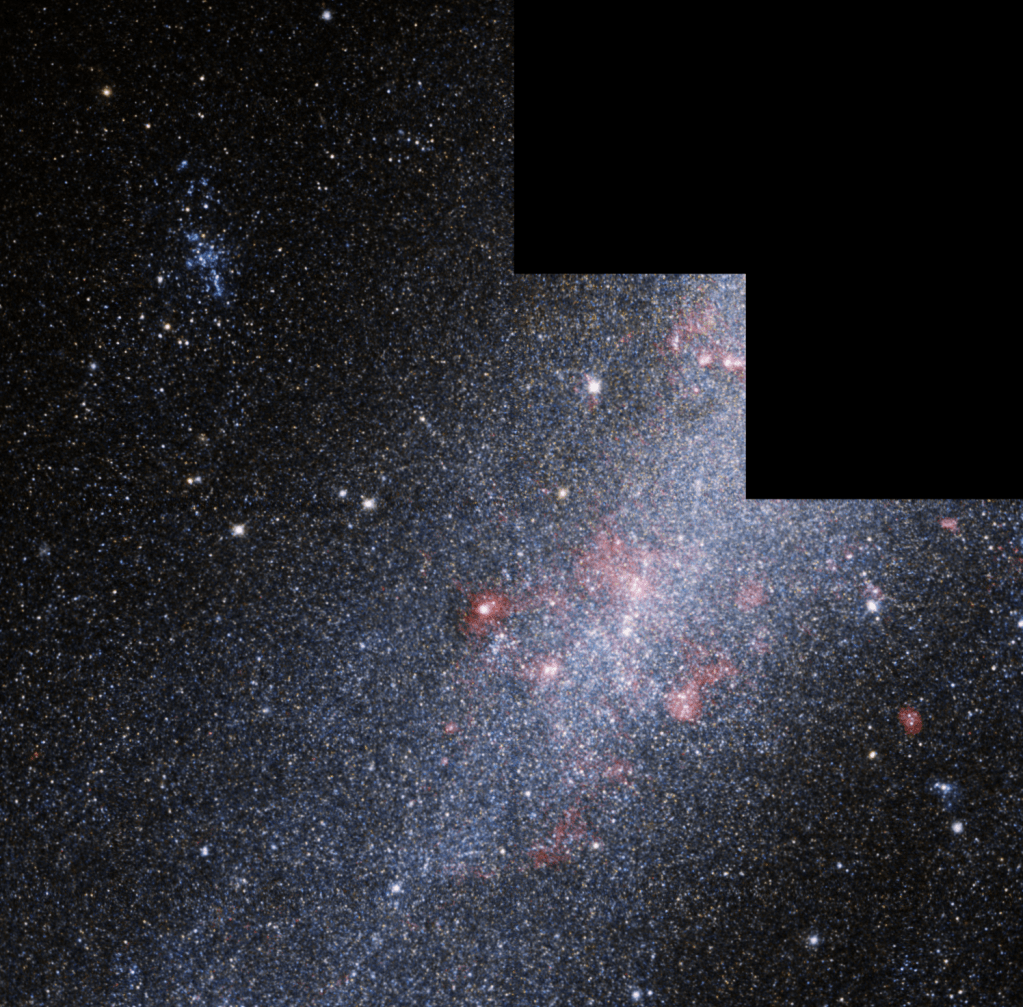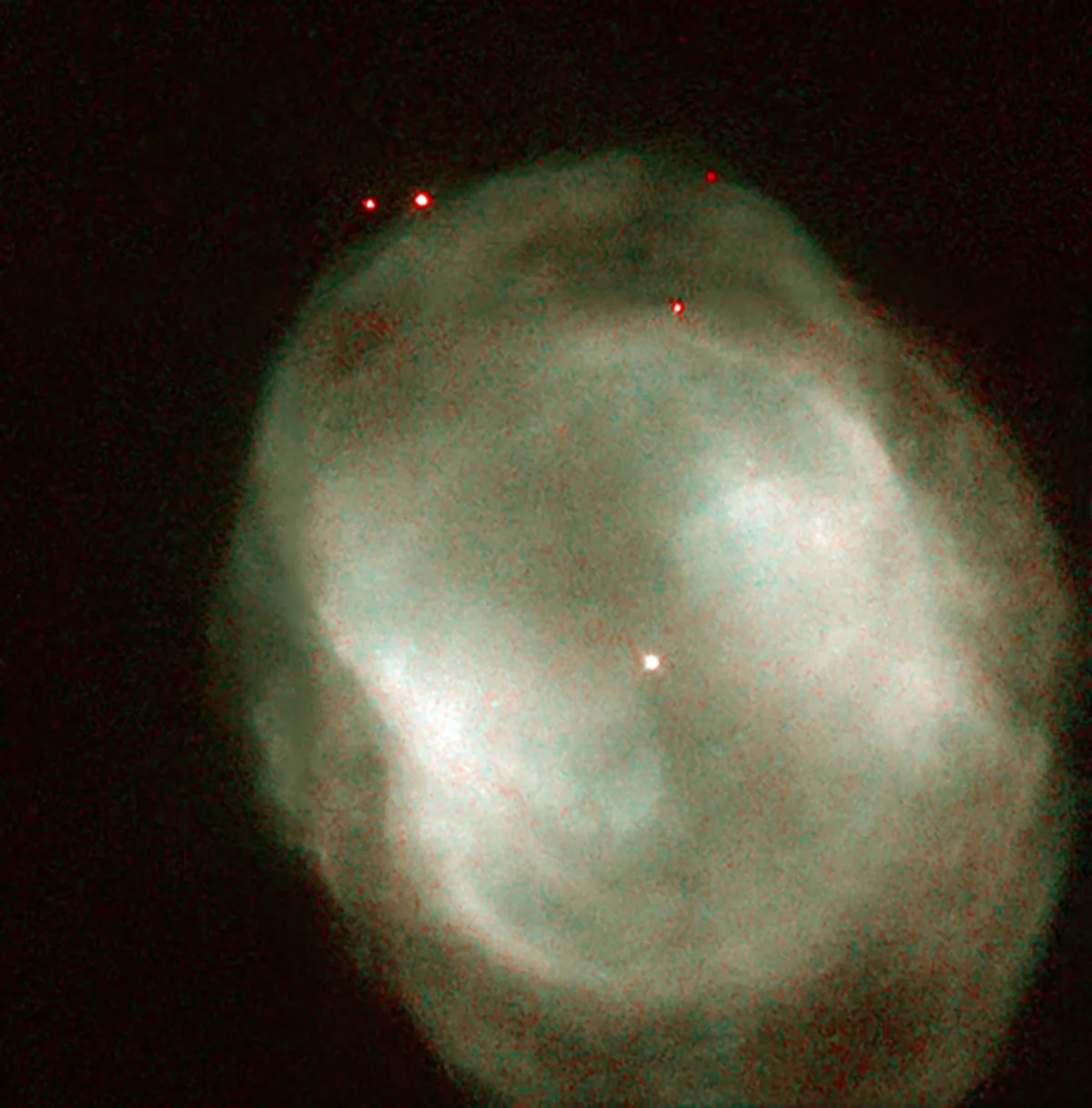Caldwell 109
A dying star at Caldwell 109's heart shed its outer layers, creating a shell of gas around the star.
Distance
5,500 light-years
Apparent Magnitude
11.6
constellation
Chamaeleon
object type
Planetary Nebula
The final item in the Caldwell catalog, Caldwell 109 resembles a phantom snowball. The glowing shroud of gas was shed by its central star in a final act before dying. Like all stars, the one in the middle of this nebula spent its life participating in a precarious balance act, with the outward pressure generated by nuclear fusion countered by the inward pull of gravity. During most of the star’s lifetime the two held an uneasy truce, making the star a giant, controlled nuclear bomb.
When the star began to exhaust its hydrogen fuel, however, there wasn’t enough pressure to fight off gravity. The core began to contract, becoming denser and hotter, triggering the fusion of helium into carbon. The heat produced caused the star’s outer layers of gas to expand, transforming the star into a red giant. After spending about a billion years as a red giant, the star began a 10,000-year process to shed its outer layers of gas, ultimately uncovering the remaining core of the star — a white dwarf. High-energy radiation from the white dwarf makes the cast-off gaseous layers glow, creating a ghostly specter in the night sky. In tens of thousands of years, Caldwell 109 will fade into darkness as the white dwarf cools like an ember until it finally burns out completely.
Planetary nebulae like Caldwell 109 are especially interesting to scientists because they represent a future stage of our own Sun, which is destined to meet a similar fate in about 6 billion years. This Hubble image was taken in visible and infrared light using the Wide Field and Planetary Camera 2 as part of a survey of planetary nebulae. The observations revealed many surprisingly intricate, glowing patterns spun into space by aging stars: pinwheels, lawn-sprinkler–style jets, elegant goblet shapes, and even some that look like a rocket engine’s exhaust.
Caldwell 109 was discovered by John Herschel in 1835 and subsequently cataloged as NGC 3195. It lies 5,500 light-years away toward the Chamaeleon constellation. It is visible year-round from the Southern Hemisphere but is highest in the autumn. With a magnitude of 11.6 it can be a challenging target to spot for small telescopes. Through a moderate-sized telescope, Caldwell 109 will look like a swollen star.
For more information about Hubble’s observations of Caldwell 109, see:
NGC 3195
Hubble Witnesses the Final Blaze of Glory of Sun-Like Stars
Glossary
Magnitude - The brightness of an astronomical object, represented by a number; bright objects have low numbers on the magnitude scale, while dim objects have high numbers.
Nebula - An interstellar cloud of dust and gas; either a location where new stars are being forged or a cloud of material ejected into space by a dying star.
Planetary Nebula - An expanding shell of gas around an aging or dying Sun-like star, cast off by the star.
Red Giant - The late evolutionary stage of an intermediate-mass star that has exhausted the nuclear fuel in its core and now fuses hydrogen in an expanding shell around the core.
White Dwarf - The core of a dead Sun-like star whose outer layers have been expelled into space.
Explore Hubble's Caldwell Catalog
The following pages contain some of Hubble’s best images of Caldwell objects.

Also known as NGC 188, this group of stars formed from a large cloud of gas making the stars roughly…

This shell of gas is expanding outward, away from the dying star within.

This barred spiral galaxy was first spotted by British astronomer William Herschel in April 1793 in the constellation Draco.






























